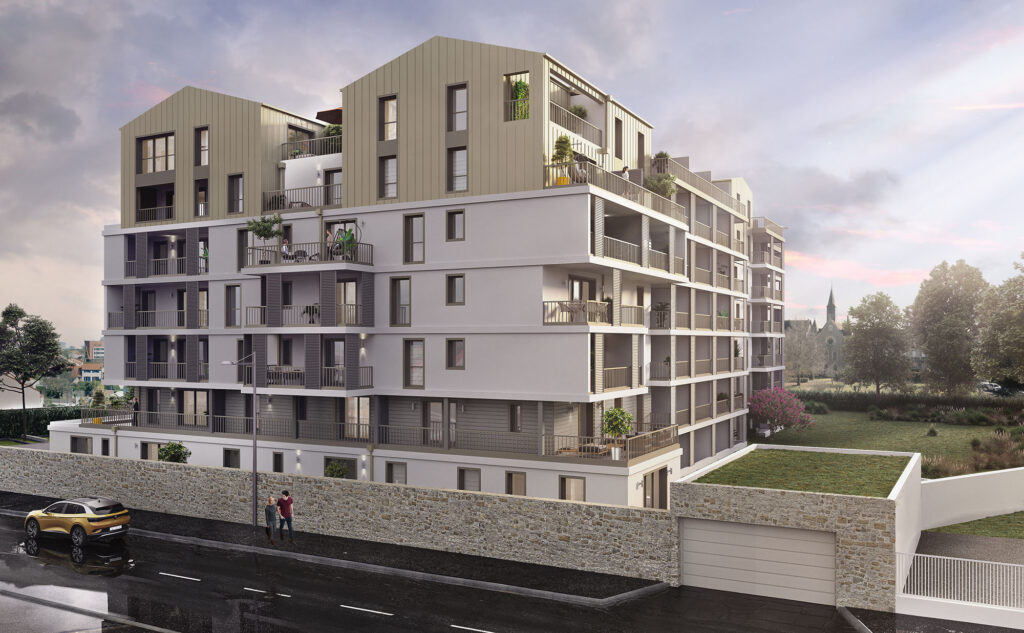Online visualization platforms facilitate 3D visualization and collaboration with your team members. With no download or installation required, they offer a simple way to view and comment on 3D models.
Before you can import your 3D models onto these platforms, you need to make a number of configurations. Why and how should these optimizations be carried out? Find out in this article all you need to know aboutoptimizing 3D models for online visualization platforms.
What online viewing platforms are available?

Online viewing platforms are applications and services that enable users to view 3D models without installation. These viewers appeal to professionals and the general public alike, thanks to their ease of use.
Several tools are available to meet your specific needs:
- Sketchfab allows you to upload and share 3D models with your team or a wide audience;
- Verge3D is the ideal tool for importing models from Blender and 3Ds Max to create interactive web experiences;
- 3D viewer online is a 3D model visualization service available directly from a simple web browser. You can import a variety of popular formats and files for online viewing and sharing.
- p3d.in is an online tool for downloading, viewing and sharing 3D models. It functions much like an online gallery.
These 3D viewers are particularly popular in the fields of architecture, engineering and product design. The general public can access them quickly and easily.
However, if you want to put your 3D models online to communicate your achievements, optimization is often essential.
Indeed, 3D models are often very large and complex, making them difficult to support on all platforms. The time taken to download or load a 3D object can be very long, with a heavy impact on bandwidth.
What's more, it will consume a lot of graphic resources on your computer and also on those of the observers. That's why you need to optimize your 3D models for online viewing platforms. This will make your 3D model less complex and more suitable for these viewers.
It offers a smoother experience and, above all, wider access from a phone or simple web browser. For successful optimization, you need to follow a precise method to reduce the complexity of the 3D object without compromising its quality.
What methods are available for optimizing 3D models?
In reality, several steps are required to optimize 3D models for online platforms and viewers.
File size reduction
3D models are often very large due to a number of parameters (high number of polygons, very high resolution). The first step in optimization is therefore to reduce the file size as much as possible.
Unnecessary data (metadata, additional rendering layers) can be removed or compressed. However, there are other, less drastic solutions to consider.
Simplified 3D object geometry
Triangles form the basis of 3D modeling, while polygons enable more complex constructions. Together, they represent a substantial weight on the file, hence the need for geometric simplification.
You can do this by reducing the number of polygons and triangles, or by simplifying details that are not essential for 3D visualization. Other techniques include subdividing surfaces, reducing drawing calls, spacing geometrical faces or flipping upside-down faces.
Texture optimization
You can reduce the resolution of textures by compressing them using compression tools. By exporting your model, you reduce the file size, while preserving its quality. To save time when mapping, remember to use optimized textures beforehand.
Setting up the "level of details
"Level of details" refers to the practice of offering different versions of a 3D model depending on the zoom level on the scene. So, when the camera is close, you'll see a very precise version, and when it's further away, you'll see a less detailed version.
This reduces the workload on your web browser when it's not needed.
Optimizing animations
If you have an animated 3D render, there are software programs available toeliminate superfluous animation. When creating your animation, you can also use simplified animation techniques.
Exporting suitable file formats
The final step in optimizing 3D models for viewing platforms is to export the file in a format recognized by them. This will enable you to load your file onto the viewer of your choice simply and efficiently. Several formats are commonly accepted by these viewers:
- OBJ format: supports geometry, materials and texture mapping;
- FBX format: particularly popular in the world of video games, virtual reality and 3D modeling, it supports animation in addition to textures and materials;
- GLTF/GLB format : this is an open source file based on JSON ;
- STL format: suitable for files intended for 3D modeling and printing;
- The 3DS format: its multi-compatibility makes it possible to transfer 3D models between different 3D modeling software programs.
With a compatible file, your 3D model performs better on the online viewing platform: reduced latency, optimized quality and easier import. This optimization will enable you to expand your audience on different platforms and facilitate access for mobile users and people with limited Internet connections.
What tools are needed to optimize 3D models?

To optimize 3D models for online visualization platforms, you can use one or more software packages. Each has different levels of control and specialization. Making the right choice of software will enable you to have a good impact on the object to be optimized.
- Blender: 3D software that simplifies geometry and reduces polygons. You can then export files to formats compatible with online visualization platforms.
- Simplygon: as the name suggests, this simplifies the geometric complexity of your file, without reducing its visual quality.
- MeshLab: a software program for processing 3D models, reducing their size, simplifying them and converting them to other formats.
- InstantUV: this specialized software optimizes the texture mapping of 3D models.
- Autodesk Maya / 3ds Max: this tool reduces geometric complexity and optimizes texture weight. Then simply export your file to the right format.
Thanks to this complete optimization, you can put your 3D models online on the viewers of your choice. This makes it much easier to promote your products or services, as you can have your 3D objects viewed by a wide audience who don't have powerful devices.
If you're collaborating with a team of architects or interior designers, you can have the 3D images clearly displayed for demonstration purposes. Each team member can annotate and comment on the object directly on the viewer. We create your 3D tools for architecture








